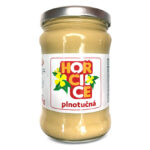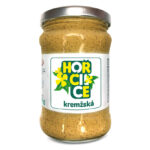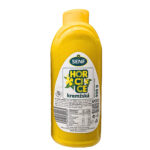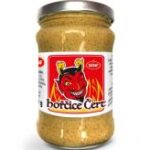
Mustard Seeds as a Bioactive Food Component
Abstract
Mustard is a plant favored by farmers for its resilience to various agro-climatic conditions and high yield. Mustard seeds have become a valuable source of many bioactive ingredients, such as polyunsaturated fatty acids and antioxidants (carotenoids, phenolic compounds, tocopherol (vitamin E)). The growing popularity of natural ingredients in food and other industries has led to the creation of new mustard-based products with improved properties. These improvements are linked to microbiological safety, longer shelf life, slower fat oxidation, higher protein content, and overall product acceptability. The high content of erucic acid and sulfur compounds in mustard seeds has limited its use in the food industry for humans or as animal feed. Currently, mustard varieties with reduced erucic acid and sulfur compounds are available. This literature review characterizes the bioactive components present in mustard seeds and presents developed possibilities for using mustard seeds in food to promote human health.
Introduction
The accelerating pace of life and lack of time for meal preparation have led to the growing popularity of ready-made and semi-finished meals. Producers of these products typically focused on affordability and taste, showing less interest in product composition. Only in recent years, with the rise in cardiovascular diseases, diabetes, cancer, obesity, and allergies, have producers started to align nutritional trends with their health impacts. People now pay more attention to product labels and, when possible, prepare meals themselves. The healthy eating trend is intensifying each year, requiring producers to make changes to their products. The range of healthy food products continues to expand. At the same time, researchers and producers are seeking out forgotten plants, long unused in kitchens, that are rich in bioactive compounds.
Mustard is a plant known since prehistoric times, rich in bioactive ingredients. There are several types, including white, black, brown, Ethiopian mustard, rocket, and wild mustard.
White mustard likely originates from the Mediterranean but is widespread across Northwest Europe, Russia, Japan, North and South America, Australia, New Zealand, the Middle East, India, North Africa, and China. It is a spring plant with a growing season of 80-125 days. White mustard is a honey plant, drought-resistant, and prevents the spread of sugar beet nematodes. Using white mustard as a crop after grain harvest provides additional benefits in soil enrichment and has phytosanitary value. Seed yields of white mustard in Poland are very stable and only slightly dependent on agro-climatic conditions.
Black mustard originated from two different regions: the Mediterranean and the Middle East. It is grown throughout Europe, North Africa, Asia Minor, western India, Siberia, China, and the Americas.
Brown mustard (also called Chinese, Indian, leaf, oriental, or vegetable mustard) originates from India and the Middle East and has a growing season of 70-120 days. This variety is resistant to adverse environmental conditions (low rainfall, high temperatures, late sowing) and has a high dry matter content. Note: The widely spread Sarpta mustard in Russia is a type of brown mustard produced in the Volgograd region.
Wild mustard (also known as charlock or field mustard) is a globally widespread species once used for oil and mustard production. It is now one of the hardest-to-eradicate weeds due to its competitive annual growth, high fertility, and very long seed dormancy in the soil. Wild mustard is also naturally resistant to some herbicides.
Ethiopian or Abyssinian mustard is an important oilseed plant native to Africa. Its seeds mature in 150-180 days and are used for both seeds and leaves. It is grown in northeast Africa, parts of Canada, France, Spain, Australia, China, and India. It is resistant to pests, unfavorable temperatures, humidity, light, nutrient levels, and pollution. It has potential use in biofuel production due to its fatty acid composition and stability during storage.
This review of mustard focuses on the characteristics of bioactive ingredients in mustard seeds and their potential industrial, medical, and food applications without preservatives.
Fat Characteristics in Mustard
Mustard seeds have a high fat content (23-47%), predominantly erucic acid (26.5-36.5%). Depending on the mustard type, the share of other fats varies – for example, white mustard oil is high in oleic acid (22%); brown and black mustard oils often contain linoleic acid (19.5-22%). Linolenic acid is also present in significant amounts (9%-15%) in all mustard seed types. Due to its high-fat content, mustard can be used as a spring oilseed crop. Mustard oil is used in cooking for its sharp taste, especially in Asian countries like India and China. The problem with mustard oil is its high erucic acid content. Diets high in erucic acid can lead to myocardial steatosis. Erucic acid can cause liver enzyme disruptions and reduce sexual activity. According to the European Food Safety Authority, the acceptable daily intake of erucic acid is 7 mg/kg body weight. To use mustard as a food raw material, it must contain as little erucic acid as possible. The first reports of obtaining mustard varieties with zero erucic acid content were presented by Fernandez-Escobar et al. Similar studies are being conducted in Canada. In India, a transgenic variety without erucic acid has also appeared. However, genetically modified products raise public concern due to the uncertain scientific approach to this issue. In Poland, studies have also been conducted to obtain white mustard seeds with minimal erucic acid content and increased fat content. By crossing Polish varieties with other lines with less than 1.5% erucic acid and higher fat content (30.2%), a new erucic-free variety was obtained. The characteristics of the obtained white mustard seeds mean they can be used to produce mustard oil with high oleic acid content (>65%), an appropriate omega-3 to omega-6 fat ratio (1.5:1), and low levels of undesirable saturated fatty acids. This fatty acid ratio provides even greater benefits from using mustard seeds and the resulting mustard oil. Few plant oils have such a high omega-3 to omega-6 ratio. Only flax, perilla, and chia oils have a ratio higher than 1:1. Omega-3 fatty acids are not synthesized by the human body and must be obtained from food. They protect the circulatory system from diseases, are important components of cell membranes, and are crucial for brain development. For this reason, the new white mustard variety (“Varta”) is a valuable source of omega-3 fatty acids, which are scarce in our diet. The “Varta” variety was registered in 2012 in Poland. To use mustard oil with high erucic acid content, it can be mixed with other common oils without erucic acid. Using oils like sesame, sunflower, safflower, peanut, soybean, olive, rice bran, and palm oil, mustard oil blends with a reduced percentage of erucic acid, better fatty acid group ratios, and rich in bioactive substances from mustard oil can be created.
The fatty acid composition in mustard seeds can also be altered through appropriate agronomic practices. Using herbicides during cultivation affects the qualitative characteristics of mustard seeds. Herbicides’ biological activity influences plant metabolism, reducing fat levels and increasing protein content. Depending on the mustard variety, herbicides can increase the proportion of saturated or monounsaturated acids. The presence of cadmium in the soil and excessive nitrogen fertilization also reduces the overall fat content in mustard seeds.
Improving mustard oil pressing efficiency in industrial enterprises can be achieved by altering the seed preparation method: microwave treatment for six minutes can increase oil extraction efficiency. This is due to reduced seed water content, which facilitates tissue destruction in mustard seeds. Additional benefits associated with thermal treatment include reduced harmful substances and increased vitamin content.
You can learn more about the micro and macronutrient benefits of mustard on our interactive page

Sulfur Compounds in Mustard Seeds
Cruciferous plants, including all mustard types, are rich sources of sulfur compounds, mainly found in seeds. Mustard seeds from different geographic regions show variability in the composition and types of these compounds. These compounds are durable, heat-resistant, and easily react with water when plant tissue enzymes are present. Enzymatic activity depends on the mustard type, with brown mustard having the highest enzymatic activity, followed by black and white mustards. Enzymes lose activity at 60°C but are more pressure-resistant. Mustard enzymes are more stable than, for example, broccoli enzymes, which is important to consider when preparing broccoli. Adding raw or lightly cooked mustard seeds to cooked broccoli ensures the production of enzymes necessary for further digestion. Powdered mustard seeds added to cooked broccoli also provide good results.
The breakdown of another sulfur compound in mustard, sinigrin, depends on the surrounding environment’s acidity (pH) and the presence of iron ions. In mustard seeds with neutral pH, it is responsible for the sharp smell of crushed mustard seeds. Moreover, increased relative humidity and temperature lead to higher sinigrin levels. Crushing mustard seeds increases sinigrin amounts, and the fat in mustard seeds slows its release. Sinigrin breakdown products have extensive antimicrobial properties against bacteria, yeast, and mold in both liquid and gas phases. Mustard seed essential oil, with sinigrin as its main component (71.06%), also has a broad spectrum of antimicrobial action, though weaker than the essential oil itself. Both the essential oil and the sinigrin product have proven effective against bacteria like Staphylococcus aureus, Micrococcus luteus, Staphylococcus epidermidis, and Escherichia coli. Mustard essential oil affects bacteria by lowering intracellular ATP concentration and reducing pH, damaging bacterial cell membranes. However, the strong smell and volatility of the compound present a problem due to its sharp taste and aroma, reminiscent of horseradish.
Hence, polymer carriers are being explored for its encapsulation. Using heat to deactivate the enzyme results in a more sensory-acceptable product.
Another sulfur compound in white mustard is responsible for the pungent taste in the mouth. This compound has a higher antimicrobial potential than the previously discussed one. White mustard essential oil has bactericidal (kills bacteria) and bacteriostatic (inhibits bacterial growth) properties.
The high sulfur compound content after mustard oil pressing makes it unsuitable for animal feed, as high levels in animal diets can cause growth retardation and iodine metabolism disruption. Studies have been conducted to reduce these compounds in mustard. In 2001, researchers crossed brown mustard with rapeseed. A stable brown mustard line with low sulfur content was obtained. The focus was on obtaining seeds with low sulfur compounds, considering the use of the meal after extraction as animal feed. By crossing Polish varieties with others, lines with less than 1.5% erucic acid, higher fat content (30.2%), and reduced sulfur compounds were obtained. The reduced sulfur content allows using the meal as a high-protein animal feed. For humans, there are increasing reports of the positive effects of sulfur compounds on health. Unlike animals, humans have a more varied diet, meaning we consume fewer sulfur compounds. These amounts positively impact the body and have anti-cancer properties. Comparing the effects of mustard oil extract on various human cancer cell lines (breast, prostate, lung, cervix, colon), the greatest effect was found on breast cancer cells. Summarizing the information on sulfur compound hydrolysis products, they have many positive properties: they are antioxidants, antifungal, and anticancer.
Industrial Uses of Mustard Seeds
Erucic acid, despite its adverse health effects, is used in industry as green raw material for anti-slip agents. It can also produce behenic acid and behenyl alcohol. White mustard oil has also been used as an ingredient in producing biopolyols for construction foams. These foams are compression-resistant and reduce flammability, aligning with sustainable development principles and reducing fire retardant costs.
There is ongoing research to find plants with high content of compounds for ethanol fuel production. Among tested plants like alfalfa stems, poplar, Ethiopian mustard, flax shavings, and hemp chaff, Ethiopian mustard fuel had the lowest greenhouse gas emissions – 145% lower than regular gasoline. Ethiopian mustard also showed the best results for eutrophication emissions.
Note: Eutrophication is the enrichment of water bodies with nutrients (especially nitrogen and phosphorus), leading to rapid algae growth and oxygen depletion in the water. This can be caused by vehicle and factory emissions and untreated sewage discharge. Eutrophication results in “dead zones,” where oxygen levels are so low that many flora and fauna species cannot survive, causing serious ecological problems and water quality degradation.
Mustard oil has been thoroughly tested for biodiesel production. Based on biodiesel fuel standards, mustard seeds can produce this fuel. Increasing the heating temperature of mustard seeds gradually improves oil pressing efficiency but also deteriorates the biodiesel properties, leading to high levels of free fatty acids, peroxides, chlorophyll dyes, and phosphorus compounds. Optimal oil pressing and oil quality conditions are heating the seeds at 80°C for 60 minutes.
Mustard seed surface and bran contain a gel-like substance composed of various polysaccharides. This mucilage reduces interfacial tension in water-oil and water-air emulsions, promoting emulsion and gel formation, giving mustard meal fat and water retention properties. White mustard contains the most mucilage, about 5%. Only oriental mustard lacks a mucilaginous coating.
Mustard seeds can be a source of natural coagulant potentially used for water purification, especially in areas with drinking water shortages. Mustard seed extract has higher coagulating activity (60%) compared to moringa seed extract (50%) for pond water turbidity. Moreover, for direct soot removal from water, mustard seed protein for coagulation showed better results than a commercial product.
In summary, mustard seeds are a versatile and valuable resource, offering a range of bioactive compounds with potential benefits for health, food industry applications, and beyond.
Looking for personalized nutritional advice? Our AI Nutritionist can tell you how mustard can be a healthy part of your diet. Get your recommendation!







